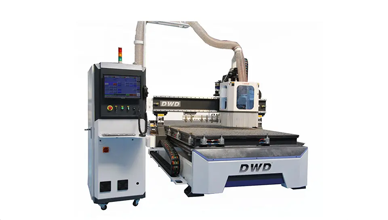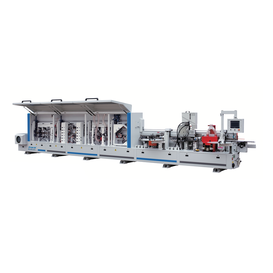close
Choose Your Site
Global
Social Media

Views: 0 Author: Site Editor Publish Time: 2025-07-10 Origin: Site
Modern CNC manufacturing has pushed boundaries in automation, speed, and precision. But even with the most powerful equipment, one element consistently determines your profitability: material usage. Did you know that inefficient layouts can waste up to 30% of your raw materials? That’s where nesting comes in.
Nesting is the unsung hero of CNC optimization. It arranges multiple parts on a single sheet of material to minimize waste and maximize productivity. It’s not just a software feature—it’s a production philosophy.
In this post, you’ll learn what CNC nesting is, how a CNC nesting machine revolutionizes workflow, and how integrating nesting techniques can cut costs and improve operational efficiency. Whether you're a furniture manufacturer or a custom parts shop, this guide has the insights you need.
CNC nesting is a process of arranging multiple part geometries on a sheet or panel in a way that maximizes material usage and minimizes cutting time. The CNC nesting machine takes digital layouts and translates them into physical cuts with exact precision.
Key advantages include:
Less Material Waste
Higher Productivity Per Sheet
Reduced Cutting Time
Lower Labor Cost
Consistent Accuracy in Repetitive Jobs
CNC nesting machines operate with 3 axes or more, enabling them to cut complex part outlines and drill holes in a single cycle. These machines are common in wood panel cutting, cabinet making, and sign production.

The process begins in CAD software where designs are created. These are then imported into CAM (Computer-Aided Manufacturing) software that performs nesting. The final output is a cutting pattern, often referred to as a nest.
| Step | Description |
|---|---|
| 1 | Design parts in CAD |
| 2 | Import files into nesting CAM software |
| 3 | Software arranges parts on sheet |
| 4 | G-code is generated for CNC nesting machine |
| 5 | Material is loaded and cut automatically |
Advanced systems integrate auto-loading, vacuum hold-down zones, and auto-labeling to maintain continuous production with minimal intervention.
Effective nesting requires intelligent software and strategic layout methods.
True Shape Nesting: Accounts for irregular shapes, not just bounding boxes.
Rotational Nesting: Allows rotation of parts to find best fit.
Part-in-Part Nesting: Smaller parts are nested within cutouts of larger ones.
Grain Direction Control: Important in wood-based panels to maintain visual consistency.
These techniques help businesses use more of each sheet and reduce scrap.
CNC nesting machines bring a range of benefits tailored to high-volume and custom workflows:
Improved Efficiency: Reduce manual handling. One operator can run an entire line.
Scalability: Works for both batch production and one-off jobs.
Integration: Connects to ERP and MRP systems for live production planning.
Labeling and Sorting: Automatically tags each piece for faster assembly downstream.
Factories using CNC nesting machines can expect a 20–30% gain in output without increasing labor.
| Feature | Description |
|---|---|
| Vacuum Table | Holds the sheet firmly during machining |
| Automatic Tool Changer (ATC) | Reduces time spent switching tools manually |
| High-Speed Spindle | Allows fast and accurate cutting |
| Multi-Zone Suction | Improves hold on complex or small parts |
| User Interface | Touchscreen control with job previews |
These features make a CNC nesting machine more than a router—it’s a smart manufacturing unit.
A major component of nesting performance lies in its software integration. The CNC nesting machine must align with your design environment.
Modern CAM tools offer:
Automated toolpath generation
Simulation and collision detection
Barcode generation and labeling
Material usage reporting
Software compatibility ensures you don’t waste time translating files or adjusting G-code manually.
Even with advanced equipment, challenges exist:
Small Part Holding: Use bridges or tabbing features.
Material Warping: Maintain vacuum integrity and sheet flatness.
Multiple Materials: Configure profiles per material.
Frequent Job Changes: Predefine templates for repeated orders.
Understanding these can help avoid downtime or poor yields.
Routine care ensures cutting accuracy and equipment longevity.
Clean dust and chips from vacuum ports
Check spindle collets for wear
Lubricate rails and ball screws
Inspect belts and bearings
Calibrate axes alignment
Backup controller parameters
Preventive maintenance avoids costly shutdowns and poor part quality.

The flexibility and efficiency of a CNC nesting machine suit many industries:
Furniture manufacturing
Kitchen cabinets
Retail displays
Signage
Automotive interiors
If your business involves cutting sheets into multiple parts, nesting machines are an essential upgrade.
The evolution of CNC nesting technology is aligned with digital transformation:
Industry 4.0 Integration: Real-time data sharing with ERP systems
IoT Monitoring: Track spindle hours, vacuum pressure, and more
AI-Powered Nesting: Software predicts optimal layouts using historical data
Remote Diagnostics: Support teams can monitor machine health online
Staying current with these trends improves competitiveness and output reliability.
Compared to manual cutting or beam saws, nesting machines:
Require less setup time
Offer more flexibility with part shapes
Reduce secondary operations
Save floor space by replacing multiple stations
In lean manufacturing systems, nesting enhances flow and reduces bottlenecks.
At DWD, we offer advanced CNC nesting machine solutions designed for modern manufacturing. Our systems are built for reliability, accuracy, and ease of use—empowering your business to reduce waste and deliver consistent quality. With automated loading, optimized nesting software, and precision engineering, DWD machines simplify complexity.
Looking to elevate your production capabilities? Our experts can help you find the best-fit CNC nesting machine tailored to your unique workflow.
A: CNC nesting machines can cut plywood, MDF, particle board, acrylic, aluminum composite panels, and more.
A: Yes, we provide technical support, training, and maintenance guidance for all DWD CNC systems.
A: With DWD's user-friendly interface and training support, most operators become proficient within days.
A: Absolutely. Our machines support data communication for workflow integration and real-time monitoring.
A: Yes, DWD offers customizable working areas, spindle configurations, and vacuum table zones to match your needs.
Copyright 2022 DWD MECHATRONICS CO.,LTD
Sitemap |Technology by leadong.com